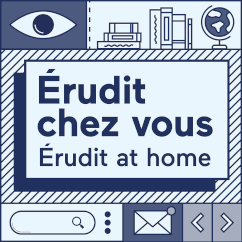Contemporaneously with the rapid and immense advances in technology, and the inception of corpora in Translation Studies by Baker’s (1995) seminal paper, we have experienced an exponential take up as well as a notable plethora of firsthand books on corpus-based Translation Studies. Among the trailblazing books in this broad and newly recognised area of research is the timely one edited by Lavid-López, Maíz-Arévalo and Zamorano-Mansilla in 2021, published in response to a nascent call for more research. Structurally framed in two parts, further split into 13 coherent units, this succinct, yet well composed groundwork of scholarship is best appreciated when read in one sitting. The authors take stock of the cutting-edge advances in corpora and translation in the digital age as well as presenting new tools and technologies. On first impression, it is obvious that this value-laden book warrants its place among the resource collections in the confluence of corpora and translation. Thematically, the first part consists of six units which centre on the main topic of corpus resources and tools with an exclusive focus on under researched areas. The authors endorse the claim that technological advances have shaped a critical nexus between digital humanities and corpora. However, the volume at hand was published to help fill the currently visible and long felt gap in corpora, translation, and digital humanities, meaning that “although CL and DH are indeed contiguous domains […], there is still little consensus as to their relation, interconnections and even possible overlaps” (p. 1). The introductory chapter is subsumed into three parts including 1) the automation of processes and the integration of language technologies in translators’ and interpreters’ workflows, 2) technology-based resources for oral and written mediation, and 3) the notion of “tech-savviness” and adoption of technology among language service providers. What lies at the heart of this part is the confluence of language and technology, which results in introducing a wide range of tools for creating and analysing (parallel) corpora. In the same fashion, among the most applicable corpora in relation to translation are parallel corpora, which make it possible to directly compare source and target languages (Vasheghani Farahani 2022). The use of parallel corpora has received significant attention when it comes to under researched language pairs such as Chinese to English. For this reason, three chapters of the first part are thoroughly dedicated to parallel corpora, their thriving role(s) in translation research as well as to creating and aligning them. Gu and Frankenberg-Garcia, in Chapter 2, discuss the ongoing need for English-Chinese parallel corpora and introduce ZHEN, the unidirectional corpus of circa one-million characters of contemporary simplified Chinese translated into English. The impetus beyond the creation of this corpus is that Chinese to English translations are scattered and not representative; thus, encouraging the compilation of this corpus whose prime purpose is to unearth features of Chinese to English translation. In Chapter 3, Martin Arista expounds a syntactic annotation model of old English prose and present-day English. In this chapter, syntactic divergence is explained in relation to alignment asymmetry types such as markedness, constituency, order and configuration. This study is exclusively focused on syntactic divergence between aligned texts and is represented in terms of structural description and a dependency tree (p. 76). The next chapter by Ranasinghe, Mitkov, et al. touches upon an innovative method which could improve the effectiveness of translation memory systems in English and Spanish language pairs. The impetus beyond this innovation consists of the fact that current commercial translation memory tools have major shortcomings as they are based on the number of shared characters and they perform based on morphological analysis. …
Appendices
Bibliography
- Baker, Mona (1995): Corpora in translation studies. Target. 7(2):223-243.
- Dash, Niladri Sekhar and Arulmozi, S. (2018): History, Features, and Typology of Language Corpora. Singapore: Springer.
- McEnery, Toney and Xiao, Richard (2007): Parallel and Comparable Corpora: What is Happening? In: Gunilla Anderman and Margaret Rogers, eds. Incorporating Corpora: The Linguist and the Translator. Bristol: Multilingual Matters, 18-31.
- VasheghaniFarahani, Mehrdad (2022): Writer-reader Interaction by Metadiscourse Features: English-Persian Translation in Legal and Political Texts. Berlin: Frank & Timme.


